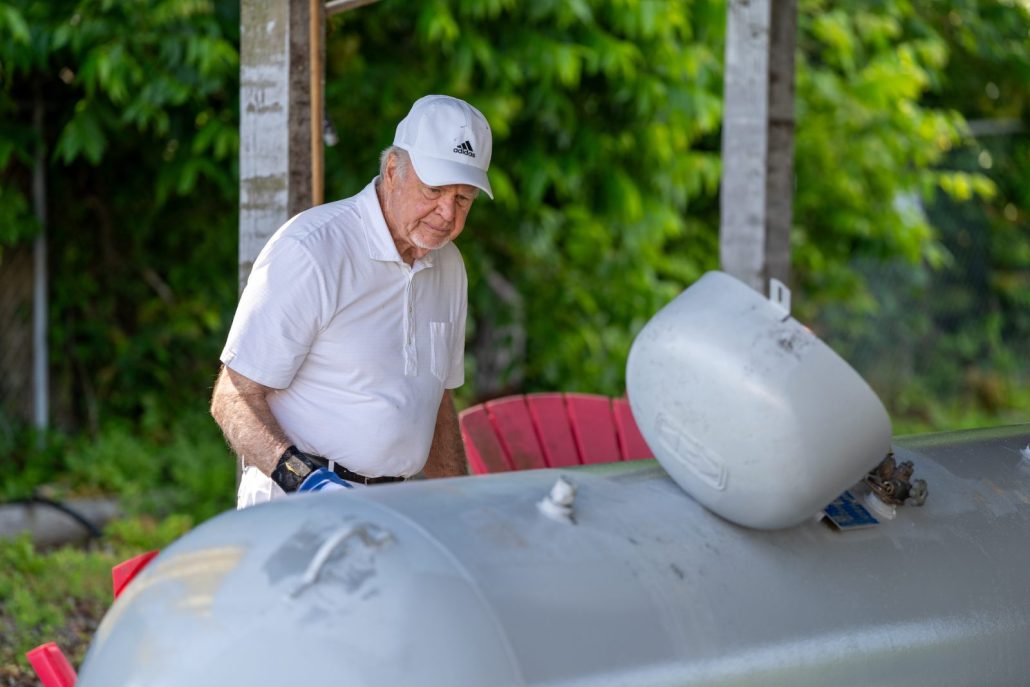How Stuff Works: Learn The Basics Of Your Propane Tank
Whether you live in Asheboro, NC or elsewhere, homeownership comes with a steep learning curve. Just like the plumbing, heating and electrical, your propane tank is an essential piece of your home, and learning the basics of how it works will empower you. We’ve written this article to review your tank’s components and safety features to keep you informed.
Learn These Key Components Of Your Propane Tank To Stay Informed.
Your propane tank and system have several key components and features that help keep your family safe and comfortable.
-
Tank Body:
The tank’s main body holds the liquid propane gas. It’s typically made of steel and designed to withstand pressure and varying weather conditions.
-
Service Valve:
The service valve shuts your gas flow on and off into your home. Knowing where this is on your tank in an emergency is critical. Like a water faucet, you can quickly shut it off if you smell gas or suspect a leak. For more information, please read our critical tips for staying safe if you smell propane.
-
Gauge:
The gauge indicates the level of propane inside your tank. It has a reading range from 0% to 100%, but your propane tank never gets filled to 100%. We only fill tanks to 80% to allow space for the pressure that may build up inside, especially during hot weather. So if your gauge is reading 40%, your tank is half full (confusing, we know). Regularly checking this, or installing a tank monitor, helps you plan refills and ensures you never run out unexpectedly.
-
Regulator:
This part controls the pressure (PSI) of the propane released from the tank to your home, ensuring a safe and steady gas flow. Technicians use the codes and dates on your regulator as an indicator of where it is in its lifespan.
-
Fill Valve:
This is where technicians add liquid propane to your tank.
-
Liquid Withdrawal Valve:
Technicians rarely use this valve, which is for extracting propane from your tank if you choose to switch providers or need to size your tank up or down.
-
Relief Valve:
The relief valve is a safety feature that releases gas in case the pressure inside the tank becomes too high. This prevents potential hazards and is rarely used—just make sure yours has a cap on it!
3 Propane Tank Safety Tips To Follow.
At Euliss Propane, safety is our top priority. Here are three essential safety tips regarding your propane tank:
-
Ensure Your Tank Is Placed Properly On Your Property:
Place your propane tank in a well-ventilated outdoor area. Ensure your tank is at least 10 feet away from your home or any structure, including garages and sheds. Typically, your propane provider will work with you on placement, so this shouldn’t be an issue.
-
Never Attempt DIY Repairs To Your Tank:
If you suspect an issue with your tank, never attempt to fix it yourself. Contact certified technicians to inspect your system and remedy any issues.
-
Schedule Regular Safety Checks To Maintain The Health Of Your System:
A gas safety check helps ensure your complete system is working correctly and safely. When we complete a safety check, we do a full system leak test and inspect every appliance, looking for correct performance or any issues that might arise.
Hear from Jon, Euliss’s Lead Installation & Service Technician, about what to expect during your next safety check.
Your Propane Partner In Asheboro & Central North Carolina.
At Euliss Propane, we’re not just your propane supplier—we’re your partner in propane safety. Don’t hesitate to reach out if you have any questions about your propane system, its components, or safety practices. Our expert team is here to assist you with safety checks and ensure your propane tank is safe and secure.





